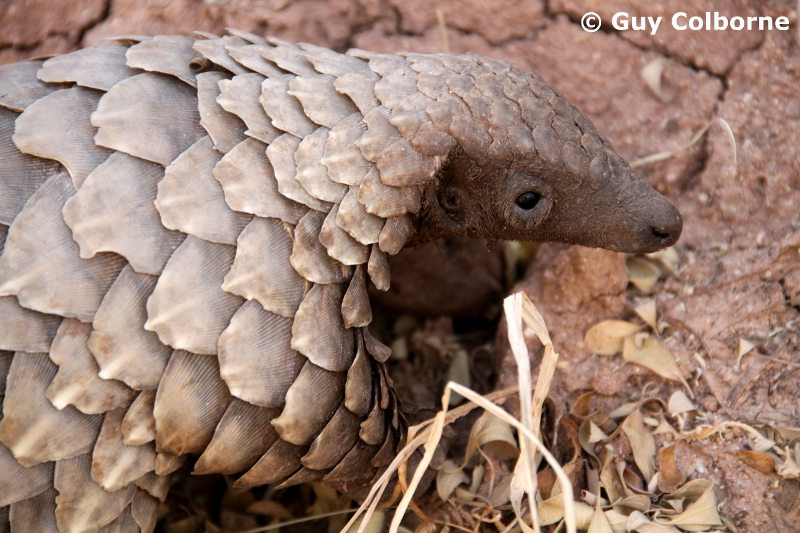Dan Challender, Co-Chair of the IUCN SSC Pangolin Specialist Group, looks back on pangolin conservation over the last IUCN quadrennium, and at objectives for the coming years.
The end of the calendar year is not just the end of 2016, but it also reflects the end of the IUCN quadrennium (2012-2016). When January begins the new quadrennium (2017-2020) will begin in earnest and there remains much to do to secure the conservation of pangolins. However, 2012-2016 has served the species well in a number of ways, as I explain here, and on this basis there is cause for optimism.
Pangolins are receiving more attention than ever before. Back in 2012, there were a relatively small number of individuals and organisations prioritising pangolin conservation globally. At the start of 2012, there was also no IUCN SSC Pangolin Specialist Group until it was formally (re)-established early that year. However, thanks to a number of actors including range states, other governments and a suite of conservation stakeholders, including various NGOs, and the IUCN SSC Pangolin Specialist Group, this has changed remarkably. The profile of pangolins has been transformed from little known, almost forgotten species, to one of contending for a spot as flagship species. A large component of this has involved awareness raising. This has come about through various initiatives including the emergence of World Pangolin Day for example, increasing media attention on the species in local, national and international press (e.g. in the Guardian), and initiatives such as United for Wildlife which embraced pangolins as a focal species and included Prince William launching an Angry Birds game “Roll with the Pangolins”.
The species have also been the subject of increasing conservation investment and action. For instance there are a number of on-going pangolin projects around the world, while the last few years has seen the emergence of new projects both in Africa and in Asia (click here to see a project map). These projects range from protecting pangolin strongholds, the rescue and rehabilitation of trade-confiscated pangolins, to genetic, ecological and behavioural research, and research and action to understand the dynamics and drivers of – and address – international trafficking of pangolins.
Pangolins have also received increasing attention in terms of action planning and policy. For example, in 2013, the Pangolin Specialist Group held its first Conservation Conference in Singapore, where members of the group met to re-assess the conservation status of the species for The IUCN Red List of Threatened Species, and which led to the first ever global conservation action plan for the species, Scaling Up Pangolin Conservation. A number of national action plans for pangolins in range states in Africa and Asia are also under development. The species were also subject to increasing attention in CITES (the Convention on International Trade in Endangered Species of Wild Fauna and Flora) between 2012 and 2016, where the Pangolin Specialist Group engaged by providing scientific information to assist Parties in their decision-making. The culmination of this increased focus resulted in all eight species of pangolin being transferred from Appendix II to Appendix I at CITES CoP17 (September 2017), a measure which from early January prohibits international trade in wild-caught pangolins for primarily commercial purposes globally (see recent blog on CITES). Similarly, the IUCN World Conservation Congress 2016, adopted a Resolution (Greater Protection needed for all pangolin species), which calls on IUCN members and all conservation stakeholders to take the necessary action to address the threats pangolins face.
The profile, progress, and momentum pangolins have gained, both in 2016, but also in the 2012-2016 period more broadly, are therefore reasons to be positive about the future. However, the main threat facing pangolins globally is overexploitation for illegal, international trade, and local use of the animals as bush meat and in traditional medicines. Such is the scale of the trade that it has been estimated that international trafficking of pangolins has involved >1 million pangolins since the year 2000. This means, as is well understood, that there is a need for multi-faceted solutions to conserve the species and much to be done to ensure solutions are in place. Immediate actions include understanding demand for illegal pangolin products in order to reduce demand among consumers; ensuring law enforcement agencies are adequately informed and are vigilant of pangolin trafficking; determining appropriate methods for monitoring pangolin populations; identifying and verifying pangolin strongholds in order to protect them; engaging local communities in pangolin conservation; and continued action planning and policy engagement. Thus, while progress has been made on pangolins, evidently many challenges remain and the momentum pangolins have gained needs to be maintained to ensure their conservation – something that the Pangolin Specialist Group will begin in earnest in the New Year.



